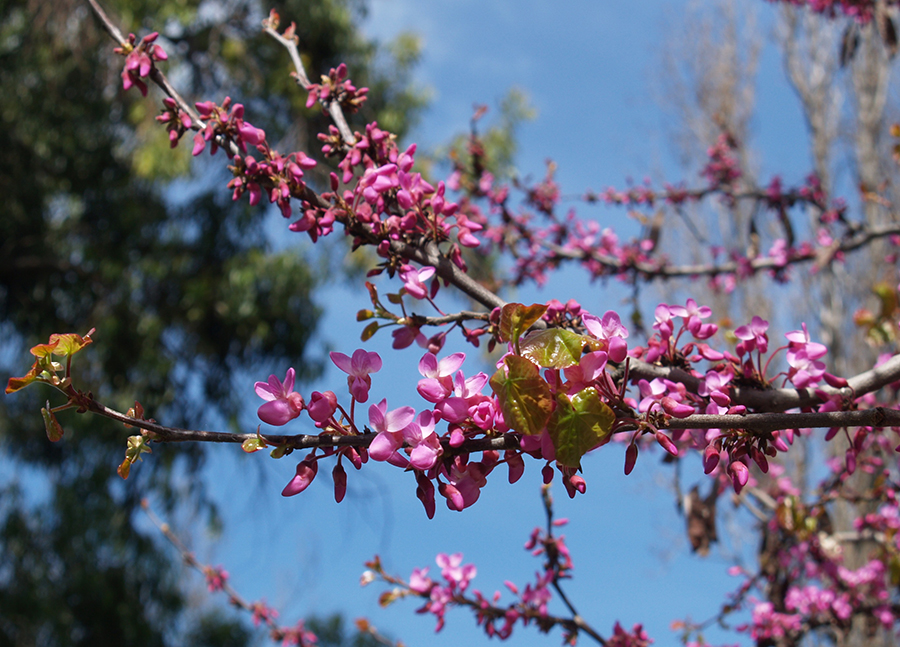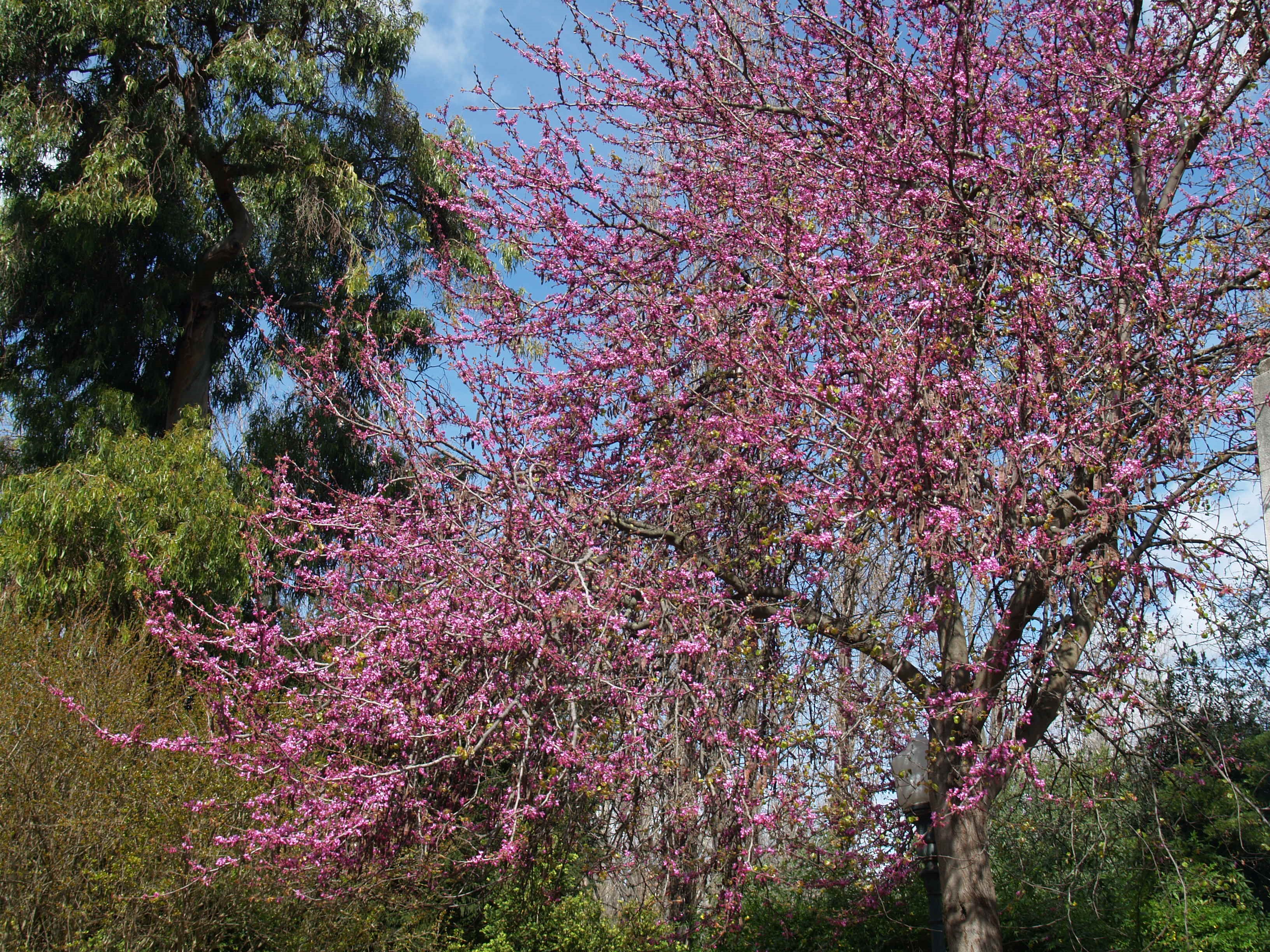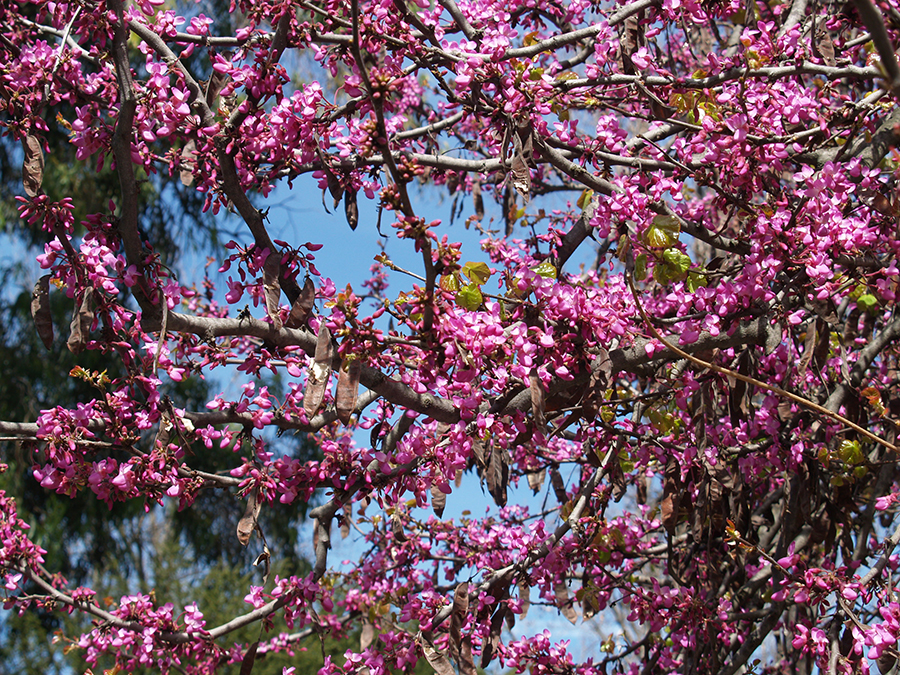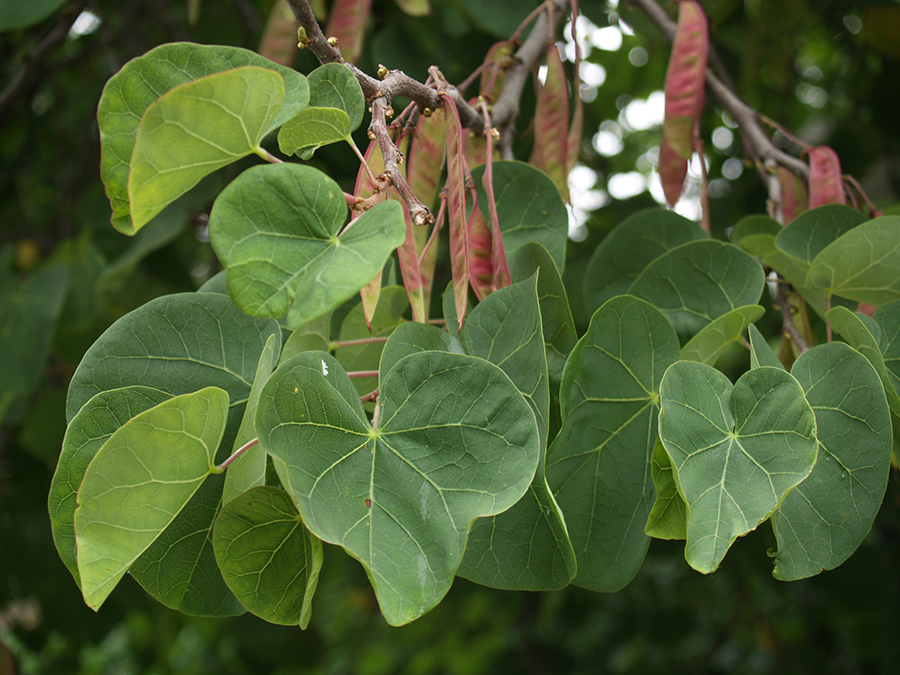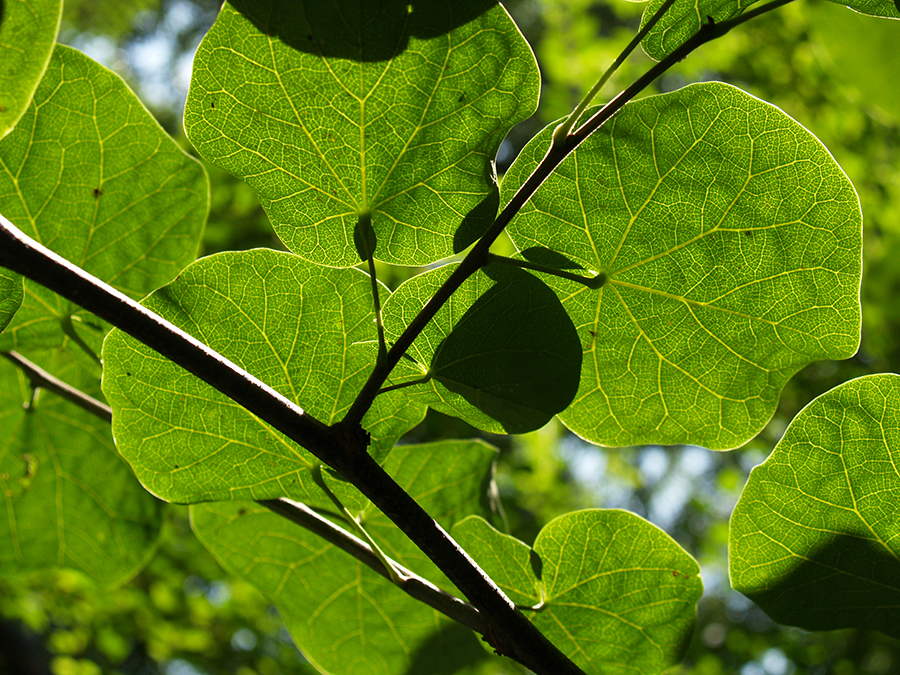
Judas Tree
Cercis siliquastrum
Family and description
Belonging to the Fabaceae or Leguminosae family, Caesalpiniaceae subfamily, Cercis genus, Cercis siliquastrum is a small deciduous tree that can reach a height of 5 to 7 m.
Its leaves are cordate, 6 to 10 cm long and dark green in colour.
The intense pink flowers are approximately 1.5 cm long, with a short chalice, grouped into dense fascicles. They bloom at the end of the winter, before the appearance of the leaves, on one-year branches or on the trunk. The flowers are pollinated by bees and other insects.
The fruits, flat pods about 7 to 10 cm long, are grayish-brown in colour, occurring during the month of September.
Origin and habitat
Originating from the eastern Mediterranean region, to Persia, it can be found growing spontaneously in the Mediterranean Iberian Peninsula but it is very rare.
It is relatively resistant to summer dryness, preferring warm climates.
It can live on calcareous or siliceous soils.
Uses and curiosities
It is very often used for ornamental purposes in Portugal, in gardens and streets, due to its abundant flowering and rusticity.

